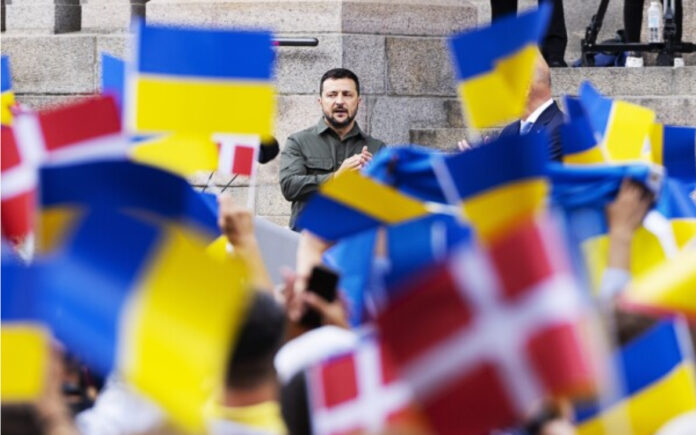Brussels: Denmark has announced it will deploy unarmed troops to western Ukraine—not to participate in combat, but to gain firsthand experience in modern warfare, particularly in the fast-evolving domain of drone technology. The move, described as a strategic training initiative, has drawn sharp condemnation from Russia, which has vowed that the Danish personnel and the facilities hosting them will not be granted immunity.
The decision by the NATO member state highlights a growing trend among European countries seeking to enhance their preparedness amid continued fears of potential escalation from Russia.
Why Denmark Is Sending Troops to Ukraine
Major General Peter Boysen, Denmark’s chief of defense, clarified that the deployment is intended solely for educational purposes. Danish troops, he said, will observe and learn from Ukrainian forces in short, one- to two-week sessions beginning in the summer of 2025.
“We’re sending some teams down to see what experiences the Ukrainians have had—first-hand,” Boysen told Denmark’s national broadcaster, TV 2.
He emphasized that these soldiers will remain unarmed and operate far from the front lines. However, he acknowledged the risks involved, as Russian missile strikes have previously targeted areas deep within Ukrainian territory. Boysen recalled his own experience seeking shelter in a Kyiv bomb bunker during a prior visit, pointing to Ukraine’s extensive network of air raid systems and protective shelters.
The number of Danish troops involved has not yet been finalized, but the focus remains clear: learn rapidly and directly from Ukraine’s real-world battlefield innovations, particularly in the area of drone warfare.
Russia’s Response: No Safe Zones
Russia has responded with strong rhetoric. Vladimir Barbin, Russia’s ambassador to Denmark, labeled the decision provocative and warned that it risks drawing Denmark “deeper and deeper into the conflict in Ukraine.”
He made clear that Denmark’s military personnel and their associated facilities in Ukraine would be considered legitimate military targets by Moscow—regardless of their location or role. Barbin’s remarks echo similar threats made by Russian officials toward Western-supported infrastructure in Ukraine, including the Rheinmetall weapons factory under development by a German firm.
Ukraine: A Global Drone Warfare Hub
Since Russia’s full-scale invasion in 2022, Ukraine has emerged as the world’s leading laboratory for drone-based warfare. Unmanned aerial systems have become integral to Ukrainian military strategy, used for everything from reconnaissance to targeted strikes.
Boysen remarked, “In my 42 years in the armed forces, I’ve never seen anything evolve as fast as drone tactics.” He added that over 70% of confirmed Ukrainian military kills now come from uncrewed systems.
Also Read | Trump Warns US May Exit Ukraine-Russia Talks Without Progress
In 2024 alone, Ukraine acquired 1.5 million drones—96% of which were domestically manufactured. This underscores both the country’s technological prowess and its growing value to NATO nations seeking to modernize their own military doctrines.
Denmark’s Broader Defense Strategy
Denmark’s initiative is part of a larger shift in national defense policy. The country has significantly increased its military budget and is working closely with allies to prepare for future regional threats. It ranks as one of the top contributors of military aid to Ukraine in terms of GDP and plays a pivotal role in supplying F-16 fighter jets to Kyiv.
Defense Minister Troels Lund Poulsen has been vocal about the need for long-term support for Ukraine. In a February interview with Business Insider, he stated, “We should be able to give Ukraine what they will need in the future.”
Also Read | Filipino Devotees Re-Enact Christ’s Crucifixion in Annual Holy Week Ritual
Poulsen also stressed that the West must move beyond drone warfare alone, and begin addressing broader challenges—such as rapid weapons production, adapting to unconventional combat strategies, and remaining agile in a landscape where warfare evolves in real time.



